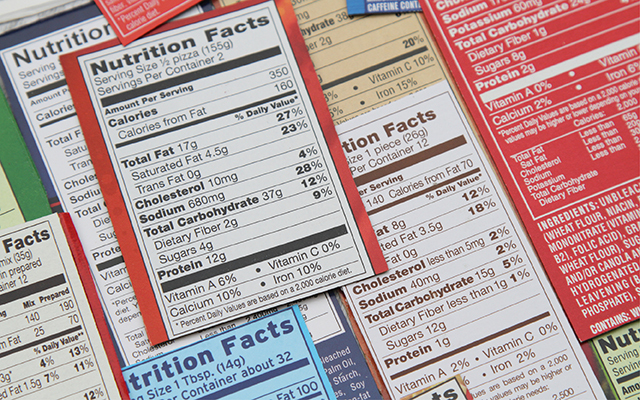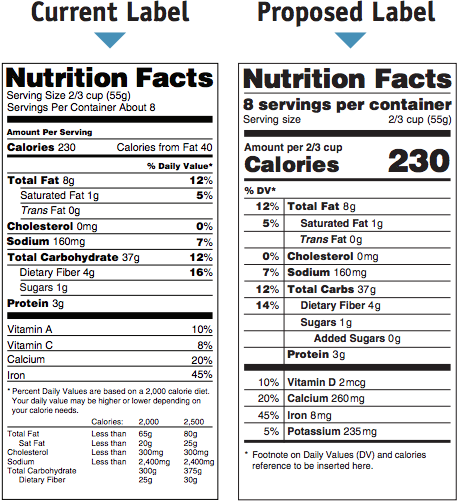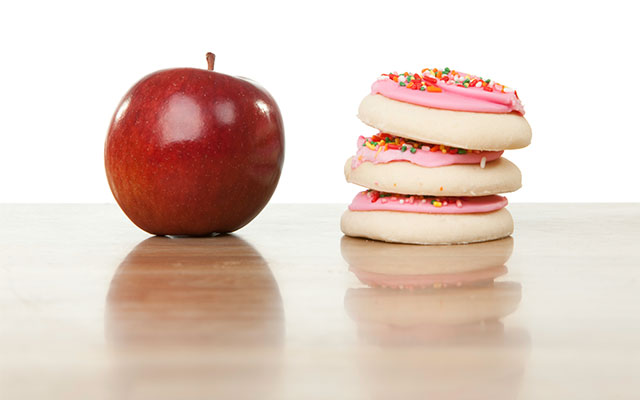After nearly a decade of public input, scientific cajoling, and corporate lobbying, the U.S. Food and Drug Administration last month unveiled its revamped Nutrition Facts label for packaged foods. Healthy-eating advocates hailed the move as a rare victory in their long-running war with the food industry, one that will help consumers make more informed decisions about the food they buy.
“This is going to make a real difference in providing families across the country the information they need to make healthy choices,” says First Lady Michelle Obama, whose Let’s Move! initiative against child obesity was a major force behind the label upgrade. “You will no longer need a microscope, a calculator, or a degree in nutrition to figure out whether the food you’re buying is actually good for your kids.”
The first significant revision since the FDA established the nutrition facts label in 1993, the new label will include the following changes:
- An updated design highlighting calories and servings.
- Adjusted serving-size requirements that more accurately reflect how much Americans actually eat.
- The amount of added sugars in the product and the percent of the recommended daily value that amount represents.
- Both per-serving and per-package calorie and nutrition information for certain multi-serving products.
- Updated daily values for sodium, dietary fiber, vitamin D, and other nutrients that reflect 2015 federal dietary guidelines.
- Actual gram amounts and percentage of daily values of vitamin D and potassium, but no listing of vitamin A and C, because deficiencies in these vitamins are relatively rare.
- Listings for calories from fat will be deleted, but amounts of total fat, saturated fat, and trans fat will still be required, noted in grams.
Most food manufacturers must shift to the new labels by July 26, 2018. Companies with less than $10 million in annual sales will get an extra year to comply.
Though major food-industry players have fought these changes for several years, the requirement to include added sugars in their products elicited the greatest opposition. As Roberto A. Ferdman reports in the Washington Post, trade groups ranging from the American Bakers Association and the American Beverage Association to the Corn Refiners Association and the American Frozen Foods Institute spent the past two years trying to prevent the FDA from instituting the new labeling requirements.
They argued that it would confuse the consumer to have a listing for “sugars” and another for “added sugars,” so the FDA changed the new label to read “total sugars” and “includes added sugars” — a compromise that left Big Sugar feeling sour. In a statement released shortly after the new label was introduced, the Sugar Association voiced its displeasure:
“The Sugar Association is disappointed by the Food and Drug Administration’s (FDA) ruling to require an ‘added sugars’ declaration and daily reference value (DRV) on the Nutrition Facts Label (NFL). The extraordinary contradictions and irregularities, as well as the lack of scientific justification in this rulemaking process are unprecedented for the FDA.”
Sugars that occur naturally in fruits are no different than those added to processed foods, the association has argued. But New York University nutrition professor Marion Nestle, PhD, MPH, writing in Scientific American, points out that these added sugars make processed foods less nutritious. “Much research supports the health benefits of eating fruit,” she writes, “whereas added sugars raise risks for obesity and other chronic conditions.”
The sugar industry’s campaign against the new labeling requirements, Nestle adds, has more to do with protecting market share than with improving the American diet. “The Sugar Association does not really care about science,” she argues. “It cares about what will happen to sales if people read labels and reject products with added sugars. This, of course, is one of the purposes of Added Sugars on food labels.”
Per-capita sugar consumption in the United States has been falling steadily since 1999, but the average American still consumes more than 126 grams, or approximately 31.5 teaspoons, each day — more than anyone else in the world, according to the market-research firm Euromonitor. But with the new labeling guidelines recommending a limit of 50 grams per day, Nestle expects food manufacturers will begin to reduce the amount of sugar in their products, a prospect that clearly doesn’t bode well for Big Sugar.
All this adds up to a victory for consumer choice and public health, Nestle notes, but one that needs to be placed in its proper perspective. “Healthful diets are based on foods, not food products,” she writes. “We would all be healthier eating foods that do not come with Nutrition Facts panels, and saving most of those that do for once-in-a-while occasions.”
For tips on translating food labels, see “How Healthy People Decode Labels.”




This Post Has 0 Comments